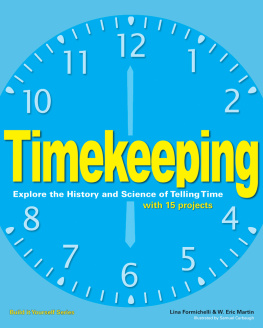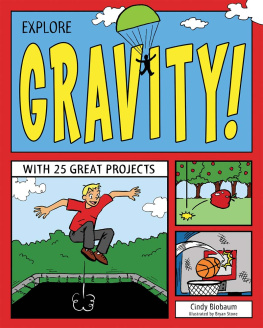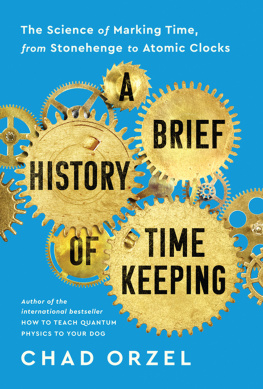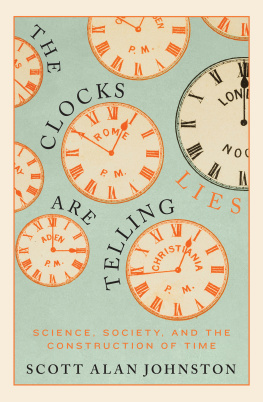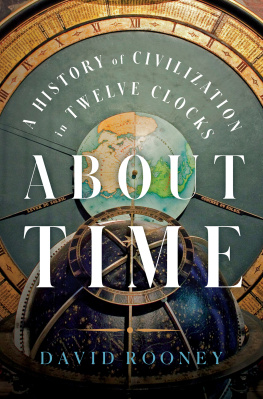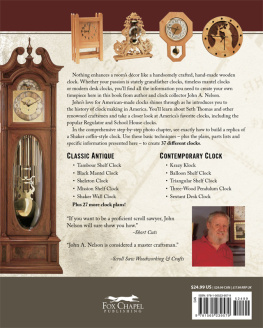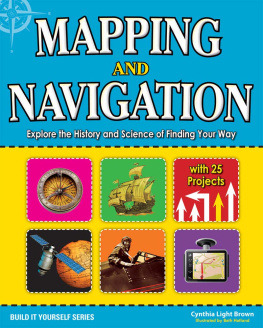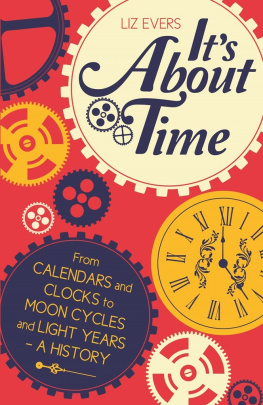

Nomad Press is committed to preserving ancient forests and natural resources. We elected to print Timekeeping: Explore the History and Science INITIATIVE of Telling Time on 4,007 lbs. of Williamsburg Recycled 30% offset.
Nomad Press made this paper choice because our printer, Sheridan Books, is a member of Green Press Initiative, a nonprofit program dedicated to supporting authors, publishers, and suppliers in their efforts to reduce their use of fiber obtained from endangered forests.
For more information, visit www.greenpressinitiative.org.
Nomad Press
A division of Nomad Communications
10 9 8 7 6 5 4 3 2 1
Copyright 2012 by Nomad Press. All rights reserved.
No part of this book may be reproduced in any form without permission in writing from the publisher, except by a reviewer who may quote brief passages in a review or for limited educational use.
The trademark Nomad Press and the Nomad Press logo are trademarks of Nomad Communications, Inc.
This book was manufactured by Sheridan Books,
Ann Arbor, MI USA.
November 2012, Job #341843
ISBN: 978-1-61930-033-0
Illustrations by Sam Carbaugh
Educational Consultant Marla Conn
Questions regarding the ordering of this book should be addressed to Independent Publishers Group
814 N. Franklin St., Chicago, IL 60610
www.ipgbook.com
Nomad Press
2456 Christian St.
White River Junction, VT 05001
www.nomadpress.net
Contents

Chapter 1
T HE B IRTH OF T IME

Chapter 2
H ERE C OME THE H OURS
Chapter 3
T ELLING T IME A FTER T WILIGHT
Chapter 4
W HAT I S A C LOCK , A NYWAY?

Chapter 5
E SCAPING THE T IME T RAPS OF O LD
Chapter 6
B ACK AND F ORTH AND B ACK AND F ORTH

Chapter 7
S LICING THE W ORLD INTO T IME Z ONES
Chapter 8
C RYSTAL C LEAR T IMEKEEPING
Chapter 9
M EASURING T IME W ITHOUT M OVING
Chapter 10
T IME ON Y OUR H ANDS
T IMELINE
| 4000 BCE: | The first Egyptian calendars appear depicting the flood, seed, and harvest seasons, each four lunar months long. |
| 3000 BCE: | Egyptians change to a 365-day calendar with 12 months of 30 days each, plus five extra days at the end. |
| 1400 BCE: | Egyptians start using the clepsydra water clock to keep time. |
| 750 BCE: | Romulus, the founder of Rome, creates a 304-day calendar. It is later changed to a 355-day calendar, and then a calendar that alternates between 355, 378, 355, and 379 days every four years! |
| 560 BCE: | Anaximander introduces the sundial into Greece. |
| 200-50 BCE: | The giant Tower of the Winds water clock is built in Athens, Greece. |
| 45 BCE: | Julius Caesar changes the Roman calendar to what is known as the Julian calendar, putting January and February at the beginning of the year. The number of days of each month is 30 or 31, except February, which has 29, and 30 every fourth year. |
| 8 BCE: | The Roman senate steals a day from February to make August and July the same length. This keeps Roman Emperor Augustus Caesar happy. |
| 700-1000: | The Chinese begin using clepsydras powered by waterwheels. |
| 1090: | Su Sungs water clock is completed in China. It measures over 30 feet tall (9 meters). The clock is stolen in 1126. |
| mid-1200s: | The idea for a mechanical escapement first appears in the sketchbooks of French architect Villard de Honnecourt. |
| mid-1300s: | Clockmakers discover how to use separate gears to count off hours. |
| 1392: | A mechanical clock designed by Italian Giovanni de Dondi is built in Wells Cathedral. It includes figures of knights that joust every hour. |
| 1500: | Clocks are made small enough that wealthy Europeans begin buying them for their homes. |
| 1500-1510: | German locksmith Peter Henlein replaces heavy weights with springs to drive the gears of a clock. |
| 1525: | Jacob Zech of Prague invents a spiral pulley to smooth out the movement of a clocks mainspring. |
| 1582: | Pope Gregory XIII of Rome introduces the Gregorian calendar to deal with the extra time that has accumulated in the Julian calendar. He takes the extra leap day out of century years not divisible by 400. This is the calendar we use today. |
| 1637: | Galileo designs a pendulum clock that he never has a chance to build. |
| 1656: | Dutch scientist Christian Huygens builds the first pendulum clock, unaware of Galileos design. |
| 1675: | King Charles II founds the Royal Observatory in Greenwich, England, to track the sun, moon, and planets in order to create accurate star catalogs for British ships to sail safely around the world. |
| 1772: | John Harrison of England is recognized for inventing a chronometer accurate enough for sailors to tell where they are on the ocean within a half-degree of longitude. |
| 1808: | William Congreve invents a rolling ball clock using interlocking gears. |
| 1847: | The British government passes a law requiring all railroads to use Greenwich Mean Time. |
| 1880: | Pierre and Jacques Curie discover that quartz crystals vibrate at a constant rate when an electric current is run through them. |
| 1883: | The United States implements a system of time zones proposed by Charles Dowd. The following year, 25 countries meet to create a system of global time zones, with each zone measured from the prime meridian. |
| 1916: | The first official daylight saving time is observed in Germany and Austria. The United States passes its first daylight saving law in 1918. |
| late 1930s: | More accurate quartz crystal clocks are made, but they remain large and expensive. |
| 1949: | The first atomic clock is built. It is 10 times more accurate than a quartz clock. |
| 1964: | The first computerized timing device is used in the Olympics in Tokyo, Japan. |
| 1970s: | Digital quartz wristwatches become popular, thanks to quartz designs that run on less power. |
Next page
